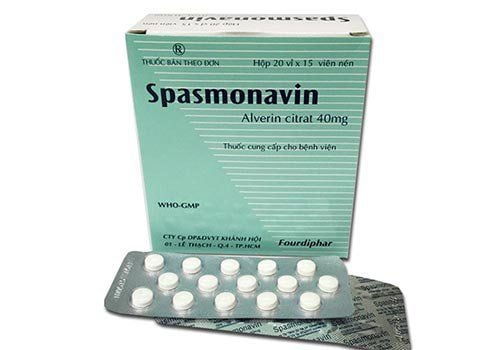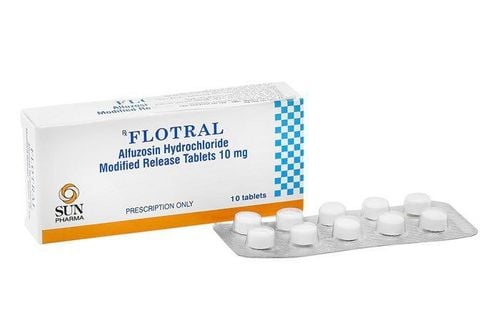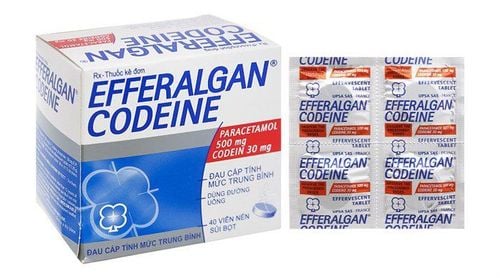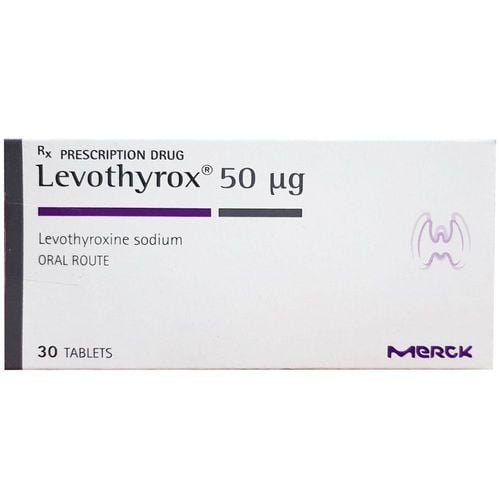This is an automatically translated article.
Piodincarevb is an ointment containing the active ingredient Povidone-iodine, used topically to prevent and treat bacterial infections of burns, ulcers, abrasions,... Let's find out the uses and dosages of Piodincarevb through the article below. .1. Pharmacology of the drug Piodincarevb
Piodincarevb ointment contains the main ingredient Povidone-iodine 10%. In addition, the drug also contains ingredients of excipients including: Alpha-tocopherol, Sodium bicarbonate, PEG 400, PEG 4000, just enough for 1 vial.1.1. Pharmacodynamics of Povidone-iodine
Povidone-iodine is a complex of polyvinylpyrrolidone (povidone-PVP) and iodine, which is a commonly used antiseptic. Povidone is used as an iodine carrier, the process of using Povidone-iodine will release iodine and show its effect. Iodine is a highly effective disinfectant that quickly kills bacteria, fungi, viruses, or some protozoa (in-vitro).
Mechanism of action of Povidone-iodine includes: Iodine is in the storage complex and free iodine kills germs. When Povidone-iodine comes into contact with the skin or mucous membranes, iodine from the complex is slowly separated, the free iodine reacts with the -SH, -OH groups, oxidizing amino acids in the enzymes and proteins of microorganisms. organisms, thereby inactivating those enzymes and proteins.
On in-vitro, most microorganisms in the vegetative process are destroyed by Povidone-iodine in a very short time (less than 1 minute). The extent of the drug's effect is shown by the loss of iodine's color (the brown color of the drug fades). The next dose may be repeated after the color loss of the drug is noted. Povidone-iodine resistance has not been reported.
1.2. Pharmacokinetics of Povidone-iodine
About absorption: Iodine is absorbed through the skin. Topical use of povidone-iodine is usually systemic in very small amounts. The absorption of iodine depends on the area, skin/mucosa, wound, body cavity).
About metabolism and elimination: The drug is filtered by the endothelial system and excreted mainly in the urine.
2. Effects of Piodincarevb . ointment
Piodincarevb ointment has an antiseptic effect, killing bacteria, viruses, fungi, protozoa, ... thanks to the gradual release of iodine when used topically. Povidone-iodine is less effective than products containing free iodine, but it is less toxic due to its lower free iodine content.3. Indications of Piodincarevb . ointment
Piodincarevb ointment is indicated in the following cases:
Prophylaxis, treatment of bacterial infections in 2nd degree or 3rd degree superficial burns. Note: Do not use more than 20% of the body area for large burns. Prophylaxis and treatment of bacterial infections in skin sores, which can be found in bedridden patients, chronic leg ulcers or cuts, wounds, and abrasions.
4. Usage and dosage of Piodincarevb . ointment
How to use: Piodincarevb ointment is used topically on the damaged skin by applying it directly to the skin or indirectly through a gauze dressing, which can be bandaged if necessary.
Dosage: Apply Piodincarevb from one to several times a day.
5. Contraindications of Piodincarevb
Contraindicated to use Piodincarevb in people with hypersensitivity to iodine or any other component of the drug. Piodincarevb should not be used when the thyroid gland is overactive (hyperthyroidism) or in patients with other obvious thyroid conditions (such as thyroid disorders). Do not take Piodincarevb before and after radioactive iodine treatment (such as in the treatment of thyroid cancer). Do not use Piodincarevb ointment before thyroid scintigraphy (radioactive iodine scintigraphy).
6. Piodincarevb . side effects
Using Piodincarevb ointment may experience some undesirable local effects (such as irritation) or systemic side effects on thyroid, hematology, neurology.
Common side effects: Strong absorption of iodine when using Povidone-iodine in large wounds or severe burns can cause metabolic acidosis, hypernatremia, affect kidney function, decrease thyroid function, May cause attacks of thyrotoxicosis (if the patient is latent hypothyroidism), neutropenia (for severe burns), convulsions (with prolonged Povidone-iodine therapy). Rare side effects: Patients using Piodincarevb may also experience some other effects such as: allergies, dermatitis, petechiae or inflammation of the salivary glands. In addition, in patients on long-term treatment, seizures may occur, but this side effect is uncommon.
7. Piodincarevb . drug interactions
Concomitant use of Piodincarevb with wound treatment products containing enzyme components reduces the effect of these substances. The effect of Povidone-iodine is reduced in the presence of alkalis, proteins, sodium thiosulfate, other antiseptics or in high temperature environments, sunlight. Povidone-iodine can interact with products containing mercury, silver, hydroperoxide, taurolidine, so these products should not be used concurrently. Concomitant use of products containing Povidone-iodine, or immediately following application of octenidine (containing a sterile substance) at or near the application site may cause local (transient) loss of pigmentation. . Taking Piodincarevb ointment with lithium increases the risk of hypothyroidism. Povidone-iodine use interferes with thyroid function tests (thyroid scintigraphy, protein-bound iodine assay, ...) by reducing iodine absorption. Therefore, it is necessary to ensure that the interval between the end of Povidone-iodine treatment and the time when these tests are performed.
8. Be careful when using Piodincarevb . ointment
The subjects that need to be careful when taking Piodincarevb include:
Patients with goiter, goiter or other thyroid disorders: These are the subjects at risk of hyperthyroidism when taking high doses of iodine. Therefore, prolonged and extensive use of Povidone-iodine should not be used in these cases unless indicated and under close supervision. Possible symptoms of hyperthyroidism (even at the end of treatment) should be observed in order to control thyroid function. Infants and young children at high risk of hyperthyroidism: Use extreme caution when administering Piodincarevb ointment to infants and young children. Iodine can penetrate the skin, especially in children with thin skin and increased sensitivity to iodine. Therefore, only the minimum dose of Povidone-iodine should be used in infants and young children. If necessary, check the child's thyroid function (test TSH, T4), especially in children under 30 months of age. Pay attention to keep Piodincarevb out of reach of children, absolutely avoid letting children swallow Povidone-iodine into the stomach. Patients with severe burns or extensive wounds: Povidone-iodine applied topically can be absorbed systemically in patients with severe burns or extensive wounds, causing undesirable side effects. Patients with renal failure: This is also the subject of caution when using Povidone-iodine because of the risks and possible side effects. Pregnant and lactating women: The use of Povidone-iodine during pregnancy or lactation needs to be very careful because of the possibility of iodine entering the placenta and through breast milk, increasing iodine sensitivity in women. fetuses and infants. Therefore, the minimum dose of Povidone-iodine should be used only when indicated, under the close supervision of the doctor during this period. Drivers and Machine Operators: There are no known effects of Piodincarevb ointment on the ability to drive or operate machinery. To be on the safe side, consult your doctor or pharmacist before taking this medicine.
9. Overdose
The use of Piodincarevb ointment or other preparations containing Povidone-iodine should comply with the recommended dosage. Too much iodine will lead to thyroid disorders, or systemic side effects, especially in large areas of damage or severe burns.10. Preservation
Povidone-iodine is less effective under light and high temperature. Therefore, it is necessary to store Piodincarevb in a closed bottle at a temperature below 25 degrees Celsius, protected from light, to ensure the effectiveness of the drug.
Reference source: ythuoc.com.













